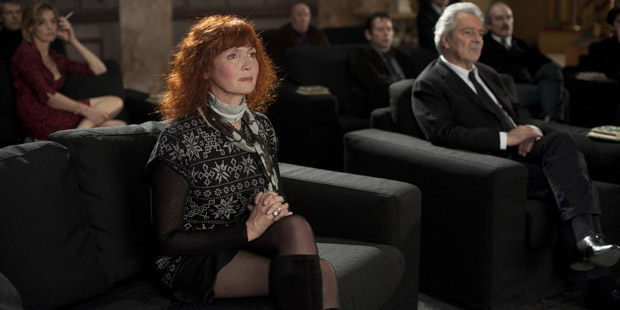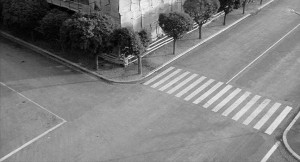Written for a posthumous tribute to Jill Forbes in the fall of 2001. — J.R.

Reading the apt words of David Edgar and Keith Reader about Jill, I can agree with a paradoxical fact about her that they both touch on in different ways: that she was painfully shy as well as totally fearless. For a long time, I used to think that this singular combination of traits was quintessentially English, but now I’m not so sure; maybe it’s just that Jill embodied and lived this contradiction in a very English way, sometimes even making it seem like it wasn’t a contradiction at all.
Thanks to having saved my appointment books, I can pinpoint precisely when I met her: standing in line to see Fritz Lang’s silent Dr. Mabuse in Paris, at Studio Action Lafayette, on February 23rd, 1973. When we met again only four days later, it was to see another silent film, Monta Bell’s The Torrent, at the Cinémathèque. We saw lots of films together that spring, including Superfly, Shanghai Gesture, An Affair To Remember (which made me cry and which she and her brother Duncan both thought was a hoot), A Day at the Races, Forbidden Planet, and Suspicion. Read more
This is my 31st “En movimiento” column for Caiman Cuadernos de Cine, formerly known as the Spanish Cahiers du Cinéma, written in late March, 2013.
For other thoughts of mine about Resnais, here are a few links:
http://www.jonathanrosenbaum.net/2012/03/on-alain-resnais/
http://www.jonathanrosenbaum.net/2009/11/the-unknown-statue-tk/
http://www.jonathanrosenbaum.net/2009/09/17072/
http://www.jonathanrosenbaum.net/2007/06/two-key-scenes-from-alain-resnais-films/
http://www.jonathanrosenbaum.net/2005/03/the-past-recaptured/
http://www.jonathanrosenbaum.net/2000/03/20108/
http://www.jonathanrosenbaum.net/1988/04/alain-resnais-and-melo/
— J.R.

After recently having caught up with Alain Resnais’ magisterial Vous n’avez encore rien vu, I belatedly discovered from diverse sources on the Internet that “Axel Reval,” the credited cowriter on both this film and Les herbes folles, is in fact a Resnais pseudonym, making it a typically sly acknowledgment of the personal nature of his filmmaking, which has been an essential part of his work since the 1950s. Remember the glimpse of the Mandrake the Magician comic strip found in the Bibliothèque Nationale in Toute la mémoire du monde? One could even argue that the fact that personal moments of this kind tend to be veiled or masked in Resnais only makes them more intense, as they sometimes are in the films of Sternberg. (Claude Ollier’s alternate title for The Saga of Anatahan: My Heart Laid Bare.)


Indeed, it might make an interesting exercise to run through Resnais’ oeuvre picking out such intense but half-hidden and fleeting details spelling out his personal investments in the films. Read more
From the Chicago Reader, April 9, 1993. — J.R
FILMS BY MICHELANGELO ANTONIONI
Jean-Luc Godard: The drama is no longer psychological, but plastic . . .
Michelangelo Antonioni: It’s the same thing.
— from a 1964 interview

Just for my own edification, I’ve put together a list of the 12 greatest living narrative filmmakers — not so much personal favorites as individuals who, in my estimation, have done the most to change the way we perceive the world and are likeliest to be remembered and valued half a century from now. The names I’ve come up with are Michelangelo Antonioni, Ingmar Bergman, Robert Bresson, Federico Fellini, Samuel Fuller, Jean-Luc Godard, Hou Hsiao-hsien, Stanley Kubrick, Akira Kurosawa, Nagisa Oshima, Alain Resnais, and Ousmane Sembene.
Only five have had their most recent feature distributed in the U.S. — Bergman, Bresson, Kubrick, Kurosawa, and Sembene. Fellini may have recently earned a special Oscar, but that doesn’t mean we can expect to see his latest film anytime soon, and though Godard’s next-to-last feature, Nouvelle vague, has finally come out on video, that doesn’t mean we can expect to see it properly, on a big screen.
We can, however, see nearly all of Antonioni’s work — 14 of his 15 feature films and most of the dozen or so shorts — in brand-new prints at the Film Center this month and next. Read more





